Recasting Manipur: Between Election And Turmoil in India
archive

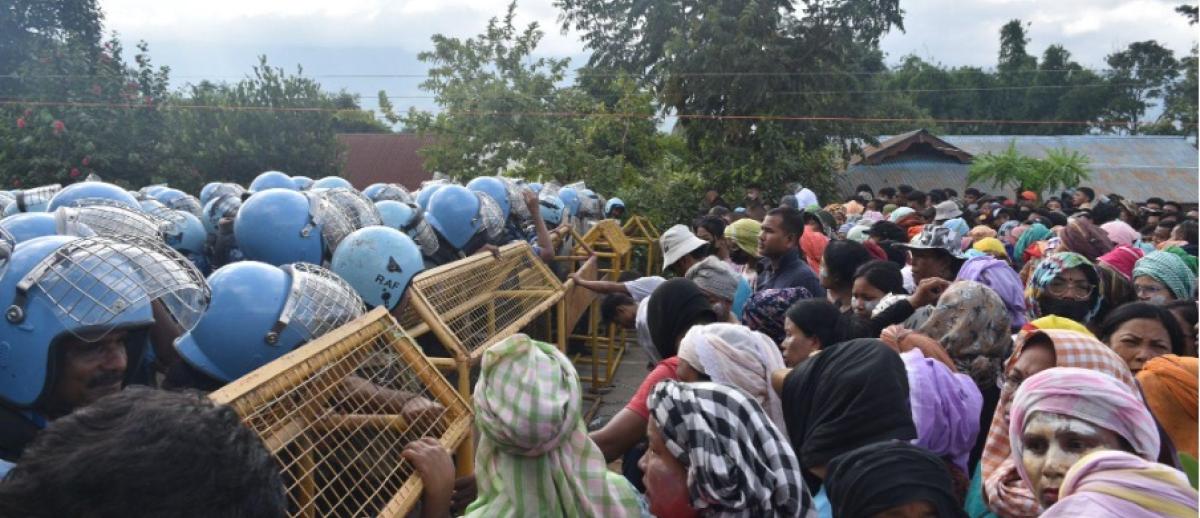
Women protestors clashed with security forces in Manipur on September 6, 2023. (Photo: Robinson Wahengbam)
Recasting Manipur: Between Election And Turmoil in India
As India, the world’s largest democracy and the most populous country, is holding its eighteenth national elections beginning April 19 until June 1, in one remote corner of the country bordering Myanmar, the state of Manipur has been reeling under an ongoing ethnic conflict. Described as “India’s Blood-Soaked War Zone” by the New York Times, this conflict that began on May 3, 2023 has claimed the lives of hundreds of people and rendered nearly eighty thousand homeless, currently living as internally displaced people (Wire, 2023). As we write this article together, there are reports of people from both the communities, the Meiteis and the Kukis involved in heavy firing at each other in the foothills of Manipur on April 12, which was shared widely on social media in an age of livestreamed war and global conflict (NDTV, 2024). Manipur also reported world’s longest internet shutdown in 2023 (Scroll, 2024) and is experiencing an economic distress and rising inflation (Aljazeera, 2024) as businesses have been forced to shut down and many others already shifted to neighboring states. At such a catastrophic time of uncertainty and vulnerability, what do the upcoming elections hold for the future of three million Manipuris from across thirty-five ethnic communities?
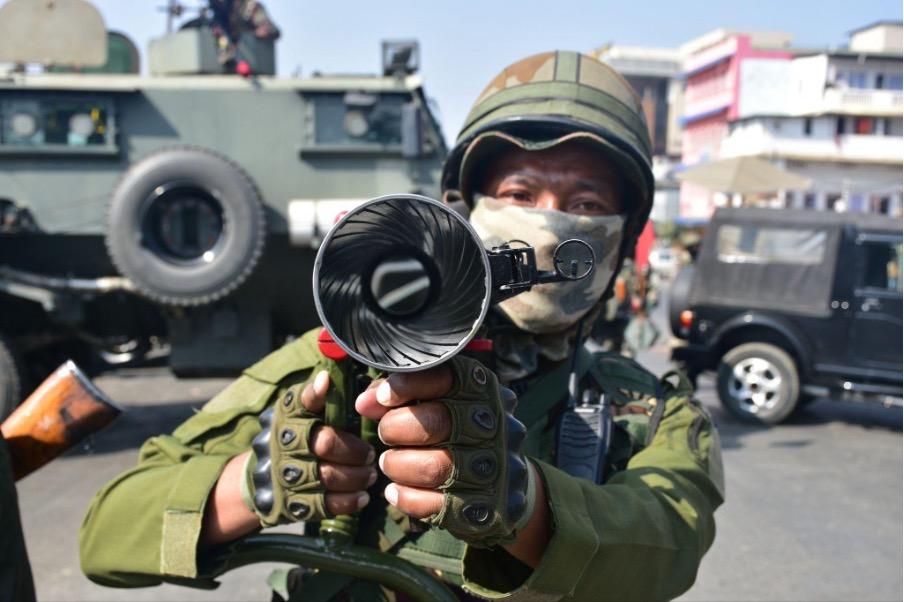
A security personnel facing the protesters in Manipur dated February 28, 2024. (Photo: Robinson Wahengbam).
The dominant narrative of this election is whether the BJP-led government will return to power with Modi as the third-consecutive Prime Minister. While the pro- and anti-incumbency factor occupies an important place in any electoral discourse, the utter tragedy that Manipuris have been relentlessly subjected to for almost a year raises serious existential questions about their fate - immediate and distant. While the opposition rhetoric revolves around the failure (ThePrint, 2023) of the so-called ‘double-engine’ government (both Manipur and India ruled by the same political party, the BJP), every Indian is asking an existential question about the scale and magnitude of this absurd violence. Putting the blame on politicians, or pitting two communities against each other, driven by ideology or blind sympathy does little help. Experts have also pointed out geopolitical factors, the ongoing conflict in Myanmar, and Manipur having been a hub of illicit cross-border arms trade and drug cartels (Nepram; Schuchert, 2023) This tension between the election and turmoil needs to be contextualized against the backdrop of the protracted political conflict (Hanjabam, 2014). between the Indian state and the various insurgent groups of Manipur since the 1950s. This political conflict has its roots in Manipur’s electoral democracy before and after its merger with the then Dominion of India in 1949.
After Manipur gained independence from the British Empire at midnight between August 14 and 15, 1947, it signed the Instrument of Accession with the Dominion of India three days earlier, on August 11, 1947, affirming its political and territorial status as a modern state. Accordingly, the Indian Dominion was granted authority to legislate on specific matters of Manipur, including defense, external affairs, and communications. Before its takeover by the Dominion of India two years later on October 15, 1949, Manipur exemplified a distinctive governance system characterized by a constitutional monarchy under the Manipur State Constitution Act of 1947. This Act embodied the long-held aspirations of the Manipuri people for self-governance and democracy, which would become one of the first to conduct elections through universal adult franchise and form a popular government in the Indian subcontinent. On January 29, 1948, the then King Bodhchandra announced,“In view of the highest form of democracy based upon adult franchise and joint electorate, I approved of the same. This form of democracy is not to be found in any of the Indian States or even in the Dominion of India up to the present moment.” (Pan Manipuri Youth League, 1978)
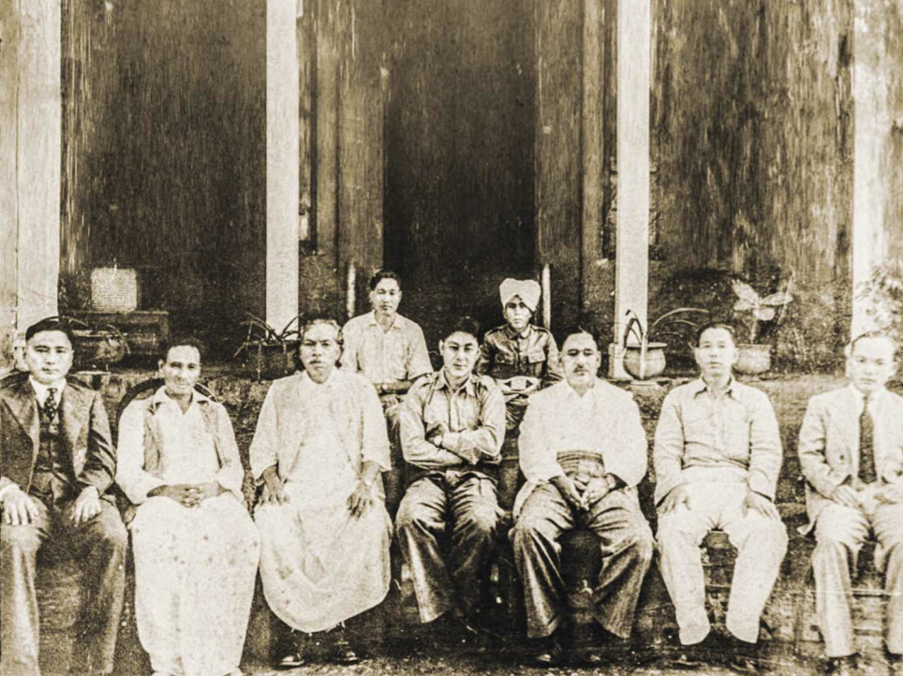
Members of the Interim Council of pre-merger Manipur, 1947-48. (Photo: Dr. R.K. Nimai Singh)
The first elections to the Manipur State Assembly were held in two phases on June 11 and July 27, 1948. It resulted in a coalition government, led by the nationalist Praja Santi Sobha Party, including members from the communist Krishak Sabha, elected representatives from the hill regions, and the Muslim community based on principles of secularism and proportionate representation. The inaugural session of the Manipur State Assembly took place on October 18, 1948. However, this ‘transfer of power to the people within the framework of constitutional monarchy inevitably tending towards a Republic' took a tragic turn when the King Bodhchandra, the constitutional head of the state, on September 21, 1949 under duress, signed the Merger Agreement, relinquishing full executive authority, jurisdiction, and administrative power to the Dominion of India (Soyam, 2013: 102). Following the merger, Manipur’s democratically elected popular government was arbitrarily dissolved and demoted into a part C state, which held the lowest possible political status in India until it gained full statehood in 1972 with an elected government (Soyam, ibid.). In response, several political movements emerged seeking the restoration of the popular government in Manipur. A notable example is the Revolutionary Nationalist Party (RNP), that initiated a campaign in 1953, but was swiftly suppressed through a sedition case, marking as one of the first such in post-independence India. The 1960s saw the establishment of the Meitei State Committee, and the United National Liberation Front (UNLF), the latter advocating for a socialist sovereign Manipur. At the moment, numerous armed groups have proliferated resulting into one of the most complex political conflicts in South Asia.
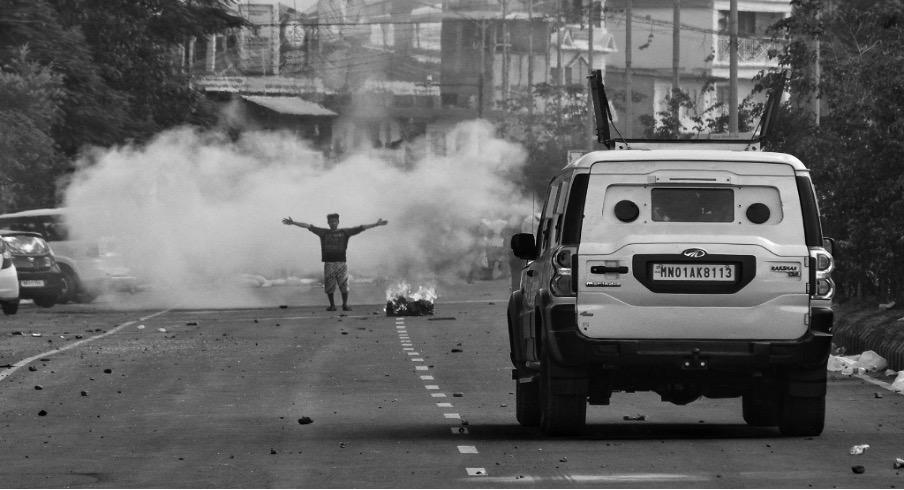
A protester facing an armored vehicle in Manipur on September 27,2023. (Photo: Robinson Wahengbam).
Despite decades of military intervention under the aegis of the Armed Forces Special Powers Act (1958) or AFSPA and other tacit and open deals (Staniland, 2013) between the Government of India and the various insurgent groups, the political stalemate in Manipur has created a state of extreme precarity. Dialogue and reconciliation for a peaceful coexistence within the various communities in Manipur and the Indian state are replaced by high-level talks between selected insurgent leaders and government representatives often with a photo-op that gives people a beacon of a futile hope. Whereas the Northeast India Women Initiative for Peace has vehemently critiqued the absence of ‘women's perspectives, experiences, and leadership’ in the ongoing seventeen peace talks. What is truly needed is an inclusive forum where stakeholders and concerned citizens from all communities and backgrounds participate in a truly democratic spirit to right the wrongs of history and deliberate on conflict resolution and peacebuilding.
Amid the contesting narratives around suitable candidates/parties emerging from the electoral ground in Manipur at present, a chorus, meanwhile, asks, “What is the point of casting vote in the middle of a war?” Many individuals and organizations have appealed not to hold elections until the ongoing ethnic violence is controlled. These collective voices unsettle the moral consciousness and future of the nation as we prepare to welcome another phase of India’s electoral democracy in an era with a majority-youth, tech-driven, skill and knowledge capital of the world. Quantitatively speaking, Manipur’s significance in the electoral outcome of the nation is negligible with only two seats out of the 543 in the parliament which comes to around 0.3%. But what is different in this current election is that it has become all the more important for the BJP to save its Manipur seat in the context of a nation-wide backlash the ruling BJP has received for how it has handled the crisis, and how it will be used against them at a national scale in political propaganda.1
Historically and geopolitically, Manipur occupies a crucial place in the nation’s imagination with all the tensions and contradictions. The violent conflicts that emerged out of these unresolved tensions since the 1950s have generated decades-long conflict in the region. Much of the harm has been caused by sidelining this historical and cultural complexity of the place and its people. The carrot and the stick conventional approach must be replaced by a people-centric approach of which electoral democracy is a prime example. Having said that electoral democracy as it stands today seems to promise little for the Manipuris who are currently trapped in daily acts of survival, be it protecting their villages from gunfire or nurturing each other through acts of community care in such times of precarity. Just three days before Union Home Minister Amit Shah’s slated visit to Manipur on April 15, 2024 for election rallies, another spate of violent ethnic clashes sent shockwaves across Manipur.
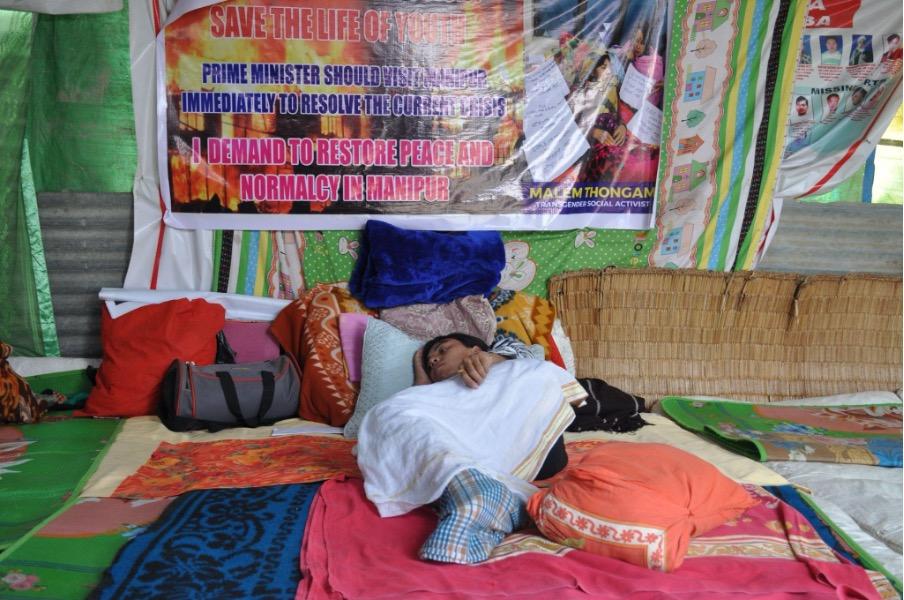
Manipuri transgender activist Malem Thongam started a hunger strike on February 22, 2024 demanding the Government of India to end the ethnic violence and restore peace in Manipur. (Photo: Robinson Wahengbam)
While mainstream media is inundated with stories of national elections and of ongoing ethnic violence, what often goes unreported is the massive scale of care built by people on the ground from both communities. With local and global support, these networks of care provide everything from daily needs to emotional care to building makeshift schools to safeguard the future of their children even in these bleak times. Such stories humanize and agentify the people who otherwise are reduced to victims and resistors of violence. Amid the clamor of daily gunfire and cries of people mourning the loss of friends and families, the upcoming election holds a range of affective response for the survivors of the Manipur conflict. In a discussion on the role of women in the upcoming election, aired on April 9, 2023, two Manipuri women activists, Lourembam Nganbi and Thokchom Sujata said, “Echasing sorok ta hayeng body da lei kattou sarukpudi, punsi hinghanaba hotnahoubana khwaidagi lambi fei. Aduga future gi oiba khanba haibase yamna mathou tare” (instead of offering flowers to the dead bodies of our children, we must work on preserving their lives and protecting their future) (35:20-35:36). This election is not merely a rite of democracy but a historic process of recasting Manipur. Under the weight of the extraordinary circumstances, the people of Manipur are witnessing a political movement while reflecting on their past and the present to imagine a livable future, Manipur 2.0.
1. Conversation with Rajkumar Panthoiren.
Hanjabam, Sukhdev Sharma. “Perspectives on Conflict Resolution in Manipur.” Kangla Lanpung. Vol 8, Issue 2. Summer 2014. 43-68.
Resistance. Ed. Th Tarunkumar. January 31, 1978. Pan Manipuri Youth League.
Soyam, Lokendrajit. 2013. Who is a Terrorist? Waba Publications.
Staniland, Paul. 2013. “Insurgencies in India,” in Atul Kohli and Prerna Singh (eds.), The Routledge Handbook of Indian Politics, pp.166-176. London: Routledge.
Raj, Suhasini; Travelli, Alex. 2023. The New York Times. https://www.nytimes.com/2023/06/09/world/asia/india-manipur-conflict.html
Ali, Yaqut. 2023. The Wire. https://thewire.in/security/the-manipur-crisis-in-numbers-four-months-of-unending-violence
Choudhury, Ratnadip. NDTV. https://www.ndtv.com/india-news/fresh-violence-in-manipur-ahead-of-elections-2-injured-5427799
Singh, Gurvinder. 2024. Aljazeera. https://www.aljazeera.com/economy/2024/1/9/ethnic-conflict-in-indias-manipur-has-completely-ruined-businesses
The Print, 2023. https://theprint.in/india/double-engine-govt-failing-people-of-manipur-cong/1629434/
Binalakshmi Nepram ; Brigitta W. Schucher. 2023. The United States Institute of Peace thttps://www.usip.org/publications/2023/06/understanding-indias-manipur-conflict-and-its-geopolitical-implications




